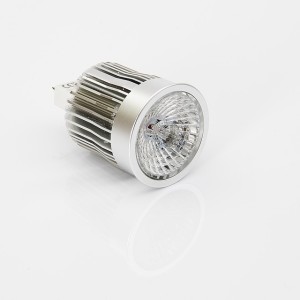LED light bulbs have quickly become the go-to lighting solution for many people around the world. Yet despite their growing popularity, not many people in Scottsdale can name ALL of the advantages of LED lighting, other than excellent efficiency and longevity.
In this guide, we’ve put together a list of little known facts about LEDs, which we hope will convince you to switch the lights in your Scottsdale home to LED if you’ve not done so already.
1. LED Light Bulbs Produce Little Heat and No UV/IR Radiation
A typical LED light bulb has a heat sink that dissipates the heat it produces, making it cool to the touch. In contrast, incandescent bulbs, halogen lamps, and even CFLs get very hot after just an hour of use. Because LEDs emit very little heat, they’re far less of a fire risk than other traditional light bulbs.
2. LED Light Bulbs Are Ideal for Lighting in Cold Environments
One of the biggest flaws of fluorescent bulbs and tubes is their tendency to dim, or worse, completely go out in cold temperatures. If you need reliable and efficient outdoor lighting, LEDs are the answer. In fact, LEDs and their accompanying fixtures get even brighter and more efficient the lower temperatures get. The closest comparisons to this are liquid-cooled personal computers, which perform better in cooler temperatures.
3. LEDs Are Used for Light Therapy
Light therapy, or phototherapy, refers to a variety of treatments that expose skin to different wavelengths of light. An LED facial involves using LED lights with different UV-free wavelengths, which reportedly have the effect of boosting collagen levels and eliminating acne. Research on LED light therapy show the treatment has positive results, but as one study says, “further study to optimize the parameters of treatment is required.”
4. LED Light Bulbs Are Compatible with Dimming Controllers
Unlike CFL bulbs, LED light bulbs are compatible with most third party dimming controllers. The ability of the bulb to dim is usually noted on the packaging, so if this feature is important to you, check an LED bulb’s label before buying it.
5. LEDs Generate Full Lighting Brightness Instantly
Compared to CFLs and incandescent bulbs that need time to warm up, LEDs produce their full brightness the moment they’re switched on. With an LED bulb, you don’t need to wait for it to emit its full light each and every time you turn it on. Think about those times when you had to go in and out of a room repeatedly and switched the lights on and off.
6. LEDs Don’t Attract Insects
Many LED makers like to point out how their LED light bulbs don’t attract bugs. This has led to the belief that LEDs don’t attract insects. The real reason for this is that LEDs don’t produce ultraviolet light, which insects are drawn to.
That’s not true for all LED light bulbs, however. So again, be sure to check an LED bulb’s label for this information.


![Meet Igor And Reduce Your Lighting Bills [city]](https://8blocks.s3.amazonaws.com/eepros/blog-images/2014/11/Igor-300x170.png)
![4 Reasons Why Every Retail Store Needs Great Lighting [city]](https://eepros.com/wp-content/uploads/2019/11/store-984393_640-300x200.jpg)
![The Top 4 Reasons Why Your Office Needs Smart Lighting [city]](https://eepros.com/wp-content/uploads/2019/03/computer-2982270_640-300x195.jpg)
![Bathroom Lighting 101: What You REALLY Need to Know [city]](https://eepros.com/wp-content/uploads/2018/07/bathroom-2094716_1280-300x200.jpg)